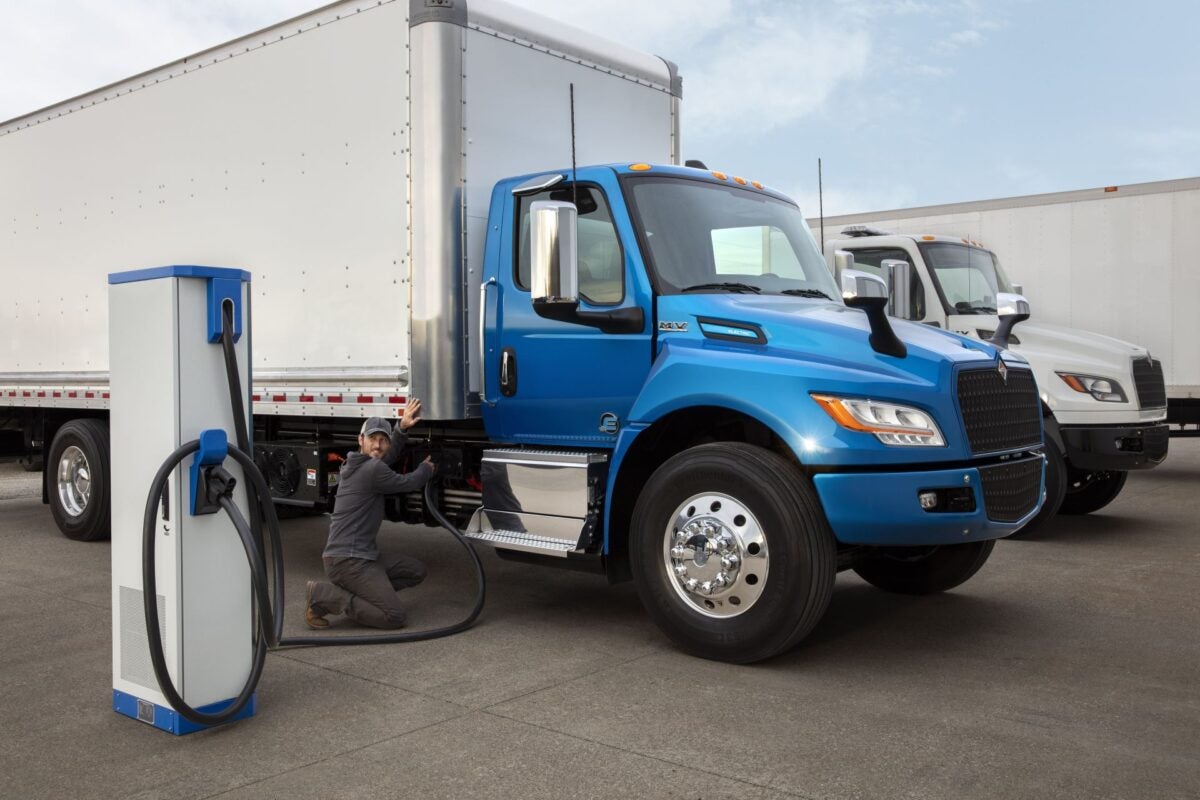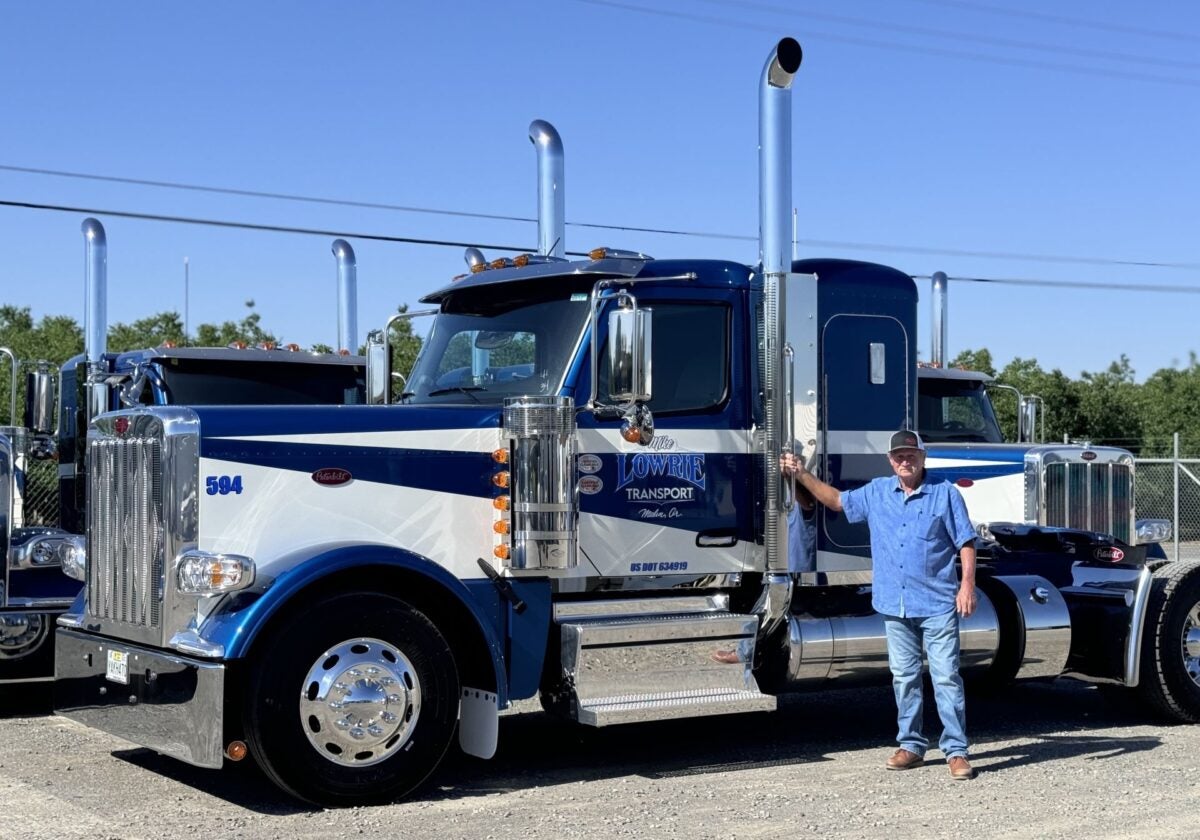Announcements of new charging depots for electric trucks seem to come almost weekly. Some are more promises than ready-to-go power. Sitetracker, a SaaS business rooted in telecommunications, is providing a cloud-based backbone to move things along.
Sitetracker has been around since 2008. In four rounds of fundraising, it has brought in $183 million, including $66 million in a Series D round in 2022. The Montclair, New Jersey-based company has doubled its head count while seizing opportunities in the transition of commercial vehicles to electrification. Customers include ChargePoint, Duke Energy and EVgo.
“I think when I first joined, which was about three years ago, we had closer to 200 employees,” Melvin Irizarry, Sitetracker product manager, told me. “Energy wasn’t necessarily as huge a focus. We had started penetrating EV [electric vehicles], and that gave us the clue: This is where we need to go.”

Sitetracker’s value proposition is sort of like the old BASF slogan about not making things but making them better. The obvious clients make charging equipment. Now fleets need to figure out their own charging options. OEMs and others offer help. Sitetracker goes deep.
“We’re the ones behind the scenes with the software to help them do that in a way that is scalable and faster,” Irizarry said. “We’re fitting into a new gap that’s been created because everyone’s electrifying. “[Fleets] now have to deploy infrastructure chargers, and that’s not something they’d ever done before.”
Look to the cloud
Sitetracker has to wean companies off their lower-tech solutions and show them that life — and business operations — are better in the cloud.
“I don’t know if I’d say it’s resistance, but it is certainly a challenge that most, if not all, of the people that we work with have encountered to some degree,” Irizarry said. “It’s about showing them the value of digitization. Just holding stuff in your computer or on a piece of paper no longer works with the scale and speed that we need in order to succeed.”
Sitetracker is built on a Salesforce platform, software familiar to many.
“We kind of leveraged their R&D [so] that the updates that happen to Salesforce also help us, but we lay on top of that so that we can provide a software that is familiar to folks,” Irizarry said.
‘One source of truth’
Specifically, the Sitetracker platform helps to …
- Standardize frequent job processes.
- Match deployment assets with jobsites to ensure that equipment is where it needs to be when it needs to be there, and that permits and utility interconnections are ready.
- Create mobile forms for construction crews and managers.
- Streamline vendor and labor management for better collaboration with contractors.
- Provide data analytics to forecast and scale for growth.
“We’ve worked with many EV charge point operators trying to create these charging networks that’ll actually make the transition possible,” Irizarry said. “And while there are so many challenges, especially within trucking and freight, we can help them attack this infrastructure component and make sure that that’s no longer a blocker towards their transitions.”
Automation key to ramping up charging efficiency
ChargePoint is one of Sitetracker’s longer-standing EV infrastructure customers. As ChargePoint focuses on making it easier for customers to manage when and where they charge, Sitetracker is behind the scenes, helping ChargePoint keep its myriad projects straight.
“They started seeing that they could no longer keep up with their growth,” Irizarry said. “They’d either have to hire a ton of new people or figure out another solution. We came in to replace all those structures, all those processes, and simplify them into our software so they have that one source of truth.
“The only way you can get the same person who today works five different projects by different charger installation to do a hundred tomorrow is through automation,” Irizarry said.
Sitetracker doesn’t really see direct competitors, though numerous companies offer some of the same services.
“What we see most often is that a lot of the folks are using construction management tools, tools like Procore [construction software]. They’re great tools. They’re just not necessarily intended for EV charging deployments.”
Workhorse update: Tick, tick, tick
Workhorse Group is further circling the wagons, focusing its energy and limited resources on electric step vans, which have more praise than orders that could help keep Workhorse viable.
The company said in a Securities and Exchange Commission filing on JUne 13 that it has jettisoned its commercial drone business, once seen as augmenting its electric step van by taking off from the roof to deliver parcels and return to the truck.
But the reality of its precarious financial condition led Workhorse to offload the business and about a dozen employees and building leases. The company did not disclose whether it had received any money for the business, saying only that it expected to save $375,000 a month, presumably in employee costs.
Separately, the Workhorse board on June 13 declared a 1:20 reverse stock split designed to get its share price above $1 to remain listed on the Nasdaq. The split took effect Monday, boosting shares to $2.21. They immediately began to fall, losing about 47% of their value in five trading days. They closed Thursday at $1.70.
Workhorse must maintain a price over $1 a share for 10 consecutive business days before Sept. 17, or the Nasdaq could delist the stock. That would force its shares to trade over the counter where so-called pink sheet stocks are lightly traded and often dropped as holdings by some institutional investors because of their shaky finances.
Nikola goes for 1:30 reverse split; share price tanks
Nikola Corp. shares fell 31.46% Thursday after the electric truck maker and hydrogen distributor said it would trade one new share of company stock for 30 existing shares in a gambit to remain listed on the Nasdaq and sell new shares to raise operating money.
Nikola received approval from shareholders earlier this month to execute a reverse split ranging from 1:10 to 1:30 shares. Investors apparently did not like Nikola going for the high end. Thursday’s trading volume was three times the stock’s daily average.
The reverse split takes effect after the market closes next Monday. The number of authorized shares will be 1 billion, down from the pre-split total of 1.6 billion. The reduction in authorized shares in the reverse split leaves flexibility for Nikola to sell about 467 million new shares.
To remain in good standing with the Nasdaq, Nikola shares have to trade above $1 each for 10 consecutive trading sessions before Sept. 17. The higher reverse split artificially raises the price and improves Nikola’s chances of keeping its shares above the Nasdaq threshold.
Reverse stock splits generally do not benefit companies that execute them.
“Financially it should be a non-event, but I think to investors, it does signal not-so-good things to come,” said Jonathan Geurkink, PitchBook senior analyst for emerging technology research. “There’s not a whole lot of companies that do that then suddenly have their share prices take off again.”
California doubles count of medium- and heavy-duty EVs
The headline number is impressive. California doubled the number of medium- and heavy-duty electric truck sales in the state year over year in 2023. The generous Hybrid and Zero Emission Truck and Bus Incentive Voucher Program (HVIP) was a big factor.
But looking closer at the 18,473 figure, it’s clear that the majority of the battery-powered vehicles were Class 4-6 models, which study after study have shown to be the sweet spot for electrification.
These trucks and vans travel the same routes day after day. Most return to a depot and can charge overnight on alternating current instead of more expensive and complex higher power direct current.
California Gov. Gavin Newsom said the state is two years ahead of its adoption goal for vehicles that emit no tailpipe emissions under the Advanced Clean Trucks (ACT) program.
Class 8 heavy-duty models accounted for just 354 sales last year, about 2% of total zero-emission vehicle (ZEV) sales and less than 3% of total Class 7-8 sales.
Of six manufacturers selling daycab tractors, Paccar led with 76. Daimler Truck was second with 73. BYD sold 68, Tesla 58, Volvo 44 and Hyundai 35, Truck Parts and Service reported. Some of those, like the Hyundai Xcients, are part of demonstration programs.

Navistar sold the fourth-most trucks in the Golden State in 2023. It has not produced a Class 8 EV yet. But it outsold all EV competitors in lower weight classes with 246.
Since 2021, a total of 26,921 medium- and heavy-duty ZEVs have been sold in California.
Jonathan Randall, president of Mack Trucks North America, said the decision for Mack to electrify its medium-duty MD ahead of creating a regional haul Class 8 entry respected the fact that “funds are fungible but they are finite.”
Briefly noted …
Peterbilt is reporting a strong 5,000 orders and the 1,000th delivery of its Model 589, the long-nosed heavy-duty truck that replaced the venerable Model 389.

Lion Electric has received final certification for its heavy-duty LionBattery HD, a lithium-ion battery pack designed for the Canadian company’s purpose-built heavy-duty trucks.
Hyundai Motors has surpassed 6.2 million miles of commercial use of its Xcient fuel cell truck in Switzerland.
Legend Transportation has placed an order for 50 of the new flagship Volvo VNL long-haul trucks.
Truck Tech episode No. 70: Werner Enterprises sees Class 8 electric trucks fitting only specific use cases
That’s it for this week. Thanks for reading and watching. Click here to get Truck Tech via email on Fridays. And catch the latest in major events and hear from the top players on “Truck Tech” at 3 p.m. Wednesdays on the FreightWaves YouTube channel. Share your feedback and story ideas with aadler@freightwaves.com.







